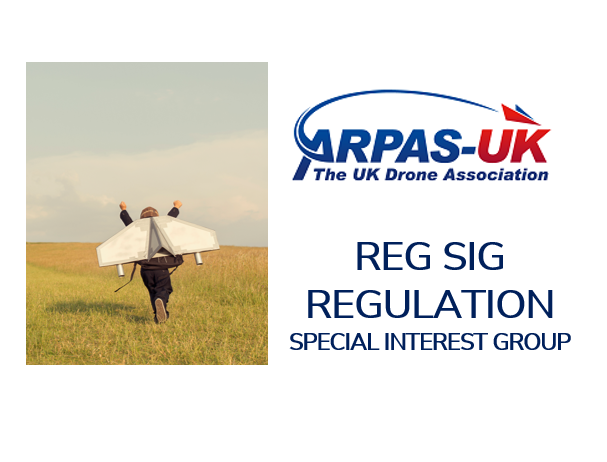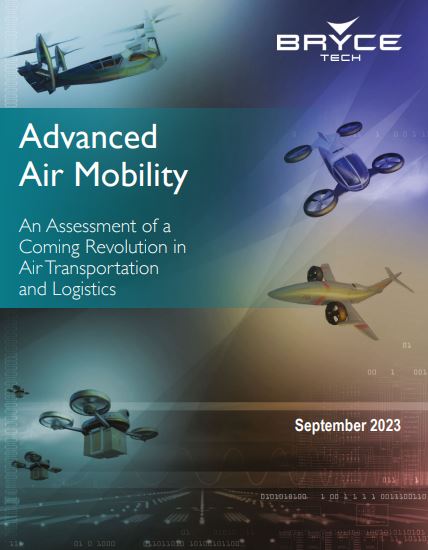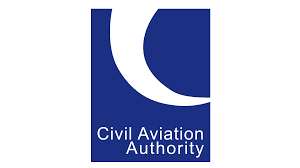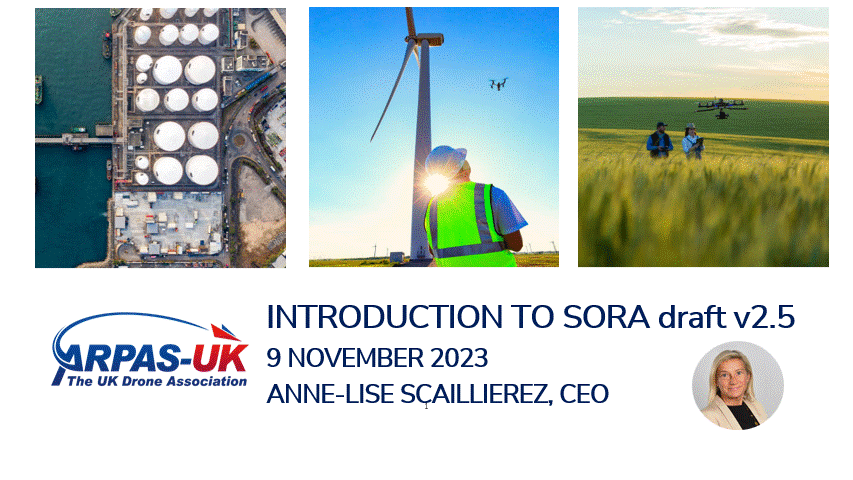

Ajuno are conducting a short survey on assurance of UAS flight controllers.
The flight controller is core to any UAS and is responsible for stabilising the aircraft, executing flight commands, and enabling increasingly autonomous navigation. Despite significant advancements in UAS technology, current flight controllers present both significant challenges and opportunities to future drone capabilities
Complete this <10min survey to help steer the future of flight controller development and have a chance to win a £50 Amazon voucher!

BryceTech was commissioned by the Department for Transport to assess the Advanced Air Mobility market readiness.
The UK’s Department for Transport (DfT) has published a comprehensive review on Advanced Air Mobility (AAM) titled “Advanced Air Mobility Evidence Review.” Released on December 5, 2023, and updated on December 7, 2023, this independent report, produced by BryceTech on behalf of the DfT, marks a crucial step in understanding and shaping the future of air travel.

The review meticulously addresses evidence gaps identified in DfT’s research areas, providing an in-depth overview of the current status and expected future trajectory of both the UK and global AAM industry. This includes a detailed examination of the development level and market entry timelines for various vehicles and enabling technologies, pivotal in shaping the industry’s future.
One of the key aspects of the review is its focus on the size and potential growth of the current UK and global markets for advanced air mobility. By assessing future market outlooks, the report highlights significant opportunities for industry players and policymakers. Importantly, the review identifies key market drivers and barriers, offering insights into potential government interventions that could facilitate the growth of the UK AAM market.
The AAM market is characterized by a high level of uncertainty due to its emergent nature. To address this, the review draws from a broad spectrum of literature and expertise, including contributions from a steering group comprising representatives from the DfT, Civil Aviation Authority, Future Flight Challenge, Connected Places Catapult, and various academic institutions. This comprehensive approach ensures a balanced and well-informed perspective on the subject.
The review is not just an academic exercise; it is a vital resource for stakeholders across the aviation sector, including manufacturers, service providers, policy makers, and regulators. It sets the stage for informed decision-making and strategic planning, essential for navigating the complexities and leveraging the opportunities in the rapidly evolving world of advanced air mobility.
In conclusion, the “Advanced Air Mobility Evidence Review” by the UK Department for Transport is a landmark report that offers a clear vision of the future of aviation. It is a testament to the UK’s commitment to leading in the development and deployment of innovative aviation technologies. As the industry stands on the brink of a new era, this report will undoubtedly serve as a key reference point for shaping the future of air travel, both in the UK and globally.

The CAA have launched a consultation on proposals to make it easier for drone users to fly safely and meet regulatory requirements. This is a follow-up to the Call for Input that took place in October – our responses were made available via the bulleting and the website.
The responses are due on January 10 2024, and we encourage all members to respond with their own views. The primary audience are the hundreds of thousands of Flyer and Operator ID holders and the Open Category operators, but the proposals also reach operators in the Specific category. A quick skim through the document indicates that it is going in the right direction, with among other proposals:
Proposals also include the extension of Flyer ID training to users of drones under 250g, and the extension of time period to adopt class-marked drones by 2 years.
The most challenging proposal is most likely the introduction Remote ID. We know that there is no consensus among our members, based on your feedback collected in October for the Call for Input . Our position as an Organisation is in favour of Remote ID, with caveats, for the reasons outlined in our response at the time. You can read it again by clicking Here (password protected). We will also make our response to this formal consultation available to members once we’ve reviewed it within the Regulation Special Interest Group REGSIG.
We will share our thoughts and our response with members, in the meantime we encourage all members to respond with their own views:
Consultation Opened: 22 November 2023
Consultation Closes: 10 January 2024

New research shows there are untapped benefits of Electronic Conspicuity devices in light aircraft, which is vital to help avoid mid-air collisions and situations where air safety is threatened, known as Airprox.
A report published by the UK Civil Aviation Authority today [16 November 2023] has looked at the importance of technology used in light aircraft that helps make pilots aware of other aircraft such as planes, gliders, helicopters and drones to avoid collisions and increase airspace safety.
The findings of the report will be used alongside new research the regulator has commissioned to set a future standard for the use of Electronic Conspicuity equipment.
As well as enhancing airspace safety, Electronic Conspicuity is vital to enabling the safe and efficient integration of airspace for all airspace users, one of the objectives of the UK Civil Aviation Authority’s Airspace Modernisation Strategy.
Electronic Conspicuity is an umbrella term for the technology that can help General Aviation pilots, drone operators and air traffic services be more aware of what is flying in surrounding airspace. It includes the devices fitted to aircraft and unmanned systems that send out position information, and the support infrastructure on the ground to help them work together.
Jon Round, Head of Airspace, Aerodromes and Air Traffic Management at the UK Civil Aviation Authority, said:
“Electronic Conspicuity is key to unlocking progress on modernising airspace in the UK.
“Not only can it help to mitigate the risk of mid-air collisions and infringements into controlled airspace, but it can enable the safe and efficient integration of all airspace users in our skies.
“This new report shows how important it is for us to continue our work in this area, so that we can enable the modernisation of the UK’s airspace structure and route network.”
The milestone report was carried out by GASCo and Jarvis Bagshaw, who surveyed pilots to investigate how Human Factors affect the safe use of Electronic Conspicuity.
The results of the survey were complimented by four trial flights, using eye-tracking technology, to observe pilot behaviour in flight when using EC to enhance their visual scan and situational awareness.
Mike O’Donoghue, Chief Executive at GASCo, said:
“Electronic Conspicuity is a really important tool for keeping our airspace safe. Our report shows its advantages, but also highlights the need for more training, awareness and hands-on practice.
“We will continue to work with the UK Civil Aviation Authority on the progress being made in this area, so that the benefits of Electronic Conspicuity can be realised.”
The research found that, despite the advantages of Electronic Conspicuity, there were many learning points including a ‘false sense of security’ from some pilots, issues around distraction when flying, and over-reliance on the technology.
The report also made recommendations on enhancing pilot training for Electronic Conspicuity devices, emphasising the importance of understanding in-flight effects and their mitigation, as well as the need for hands-on practice on the ground and in the air.
The publication of the report comes as the regulator commissions a new study on Electronic Conspicuity, which will look at how the technology can enhance airspace safety and enable integration of crewed and uncrewed airspace users. The research will aim to characterise UK airspace while researching methods of practically implementing Electronic Conspicuity.
The regulator will use this recent report from GASCo and Jarvis Bagshaw, and the newly commissioned study, to inform future decisions on an Electronic Conspicuity Standard, and how such a Standard can be implemented.
16 November 2023

SORA is the Specific Operations Risk Assessment safety methodology that the CAA intends to adopt/recommend as an acceptable means of compliance to regulations in 2024 (est.), in its next version SORA v2.5.
The JARUS group of experts published SORA v2.0 in 2019. That version is already implemented in many countries around the world.
The CAA intends to adopt/adapt the next version, v2.5, that should be published by JARUS in Q1 2024.
It is time to understand the details of SORA, especially if you are an OSC holder! Watch the webinar:
Alternatively, you can watch the slidedeck below:


As cities and communities embrace a rapidly evolving future, Advanced Air Mobility (AAM) and Urban Air Mobility (UAM) are becoming more than just buzzwords. These are transformative technologies with profound implications for local governance.
ARPAS-UK, in a pioneering collaboration with AAM4GOV, presents an enlightening online webinar tailored especially for local authority and council members. Dive deep into the world of drones and understand their pivotal role in the trajectory of UK’s industrial advancement.
Date: Tuesday, 21st November 2023
Time: 12:30 – 13:30
As AAM technologies, especially drones, begin to profoundly influence various industries, being informed and proactive is no longer just an advantage; it’s a necessity. Councils have a unique opportunity to be at the forefront, directing the urban landscapes of tomorrow.
Local government authorities are not merely regulators or observers in this transformative journey. They are the pilots, the navigators, the visionaries. With their intimate understanding of local wants and community needs, they are best placed to steer our cities and towns into the future of AAM.

Join us, as we together embark on this enlightening journey into the future of urban air mobility, ensuring our cities are not just participants but leaders in this global technological renaissance.
Meet The Speakers
Chair– Graham Brown
A dedicated advocate for integrating airspace for all users, Graham Brown stands as the distinguished Chairman of ARPAS-UK. His associations stretch far, being the co-chair of the National Police Chiefs Council (NPCC) C-UAV Advisory Group and a pivotal member of the UK Airspace Strategy Board. His involvement doesn’t end there; Graham is a part of the Drone Industry Action Group and many other organizations and working groups. Their collective aim? Developing opportunities, ensuring proportionate legislation, and spearheading the safe adoption of drones across various industries.
Consultant– Philip Butterworth-Hayes:
Specializing in aviation, Philip Butterworth-Hayes wears many hats – consultant, writer, editor, and more. With a rich history as the Managing Editor of Jane’s Transport Press and editor for several of Jane’s renowned publications, his expertise is sought after globally. His roles have also extended as the Director of Communications and Strategy at the Civil Air Navigation Services Organisation and as the current editor of Skyway. As the editorial director of PMI Media Limited, Philip’s influence in the aviation sector is undeniable. His insights have found their way to global media outlets, including heavyweights like BBC, CNN, and the Wall Street Journal.
Department of Transport- Sofia Stayte
Head of Future of Flight Policy at the Department for Transport (DfT) in the United Kingdom. With an impressive career spanning various government leadership roles, Sofia is a seasoned professional skilled in policy development, implementation, and analysis. Currently at the forefront of shaping the future of flight policy, she brings over six years of dedicated service to the DfT. Sofia’s extensive experience includes heading the Independent State Pension Age Review for the UK Government, leading innovative initiatives at the Department for Work and Pensions, and serving as a Team Leader for Private Pensions Policy. Her comprehensive background, coupled with her role as a member of the Future Flight Community Integration Group, showcases Sofia’s commitment to driving collaborative initiatives and fostering innovation in the aviation sector. We are honored to welcome Sofia Stayte as a distinguished guest speaker for our upcoming webinar.
Lawyer– Simon Phippard:
Bringing in over 25 years of experience in aviation law, Simon Phippard is an Of Counsel in Bird & Bird’s Aviation & Aerospace practice in London. From advising leading businesses in the aerospace sector to handling contracts between airlines, suppliers, and MROs, Simon’s portfolio is vast and varied. His stint at Rolls-Royce for seven years gave him an insider’s perspective into engine aftermarket services. Simon’s expertise also covers unmanned aerial systems, touching on technical regulation, liability, and supply chain challenges in this budding sector. As a Fellow of the Royal Aeronautical Society and a Freeman of the Honourable Company of Air Pilots, Simon’s contributions to the aviation industry are immeasurable.
Police- Simon Bachelor
With an illustrious 29-year career as a dedicated police officer, Simon Bachelor currently serves as the Policy and Legislation Lead for Counter Drones at the National Police Chiefs’ Council (NPCC). His expertise extends across various operational and strategic roles with a primary focus on public safety and security. Since 2019, Simon has been embedded within the Home Office Counter Drones Unit, actively contributing to the UK’s Counter Unmanned Aircraft Strategy. As the team manager for NPCC Counter Drones, Simon plays a pivotal role in governing and coordinating UK police counter-drone efforts, collaborating across government agencies to strengthen policies and operational policing.
Unable to attend our live webinar? No problem! A recording will be available after the event. Simply sign up, and we’ll notify you when it’s ready to watch at your convenience.
By registering, you consent to us contacting you in the future with news and updates about drones. You can opt out at any time by emailing [email protected].